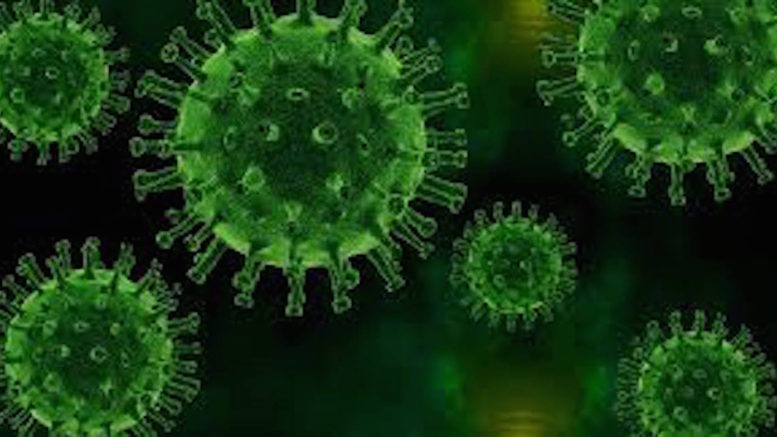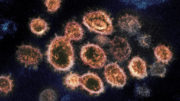Justin Kipness is a senior planning to study biology at Brown University in the fall. Each week, he will trace the coronavirus pandemic from its origin in Wuhan, China all the way to Stamford, CT. See Part 1, Part 2, Part 3, Part 4, Part 5, and Part 6 to learn how we got here.
SARS-CoV-2 has caused 342,029 deaths globally, according to the World Health Organization’s (WHO) May 25 situation report. In addition to the virus’s ability to spread across the population rapidly, it can also cause severe disease in some patients. The virus can act in a very aggressive manner.
Hospital Z
Hospital Z is not a real hospital: it represents any hospital across the globe. Hospital Z in richer nations will usually have more respirators, better masks, and equipment than Hospital Z in poorer nations. Regardless, this hospital is part of a big story: it is shaped by the pandemic with patients lost, health workers risking lives, and individual stories unique to each place. Our journey through bat caves in the picturesque Chinese countryside, controversial wet markets in Wuhan, and the NIH Campus in Bethesda all take us to one critical location – Hospital Z.
Patient Z, a hypothetical patient, enters through the back entrance of Hospital Z on a stretcher. A few days ago, they were not in as much pain. They laid in their bed trying to find a position that reduced their muscle soreness. They may have checked their temperature and recorded a mild fever, one of the common symptoms in the early stages of a COVID-19 case, according to an article in the archives of the National Center for Biotechnology Information (NCBI).
Patient Z is rushed into a sterile room. A day or maybe even a few days pass, and Patient Z’s organs begin to fail. Their lungs are severely injured and can not deliver enough oxygen to the necessary locations in their body. They develop a condition called acute respiratory distress syndrome (ARDS), a condition developed by many patients with severe cases of COVID-19, according to the NCBI.
The doctors and nurses, now in the Intensive Care Unit (ICU), try everything in their power to save this patient, but nothing is enough. Patient Z is another victim of COVID-19, one among 342,029 others who died from this disease. In this scenario, Patient Z was just another patient. Another tally in the mortality section of the WHO Situation Report. But it is important to remember that Patient Z could have been someone’s parent, grandparent, sibling, a life stripped away from loved ones from a virus that we did not know about a few months ago.
COVID-19 does not kill all. It has a 5.9 percent observed case fatality rate in the U.S. as of May 26 according to John Hopkins University Medicine – although the case-fatality rate could be lower when considering unreported cases. For those 5.9 percent of people, why does this disease lead to fatality? What biological interactions between the virus and the human body causes so much devastation?
Patient Z
Patient Z could have been anyone – a stock broker working on Wall Street, a street performer in Times Square or even a doctor who contracted the virus while on the front lines. Patient Z was likely going about their normal day when someone infected with SARS-CoV-2 sneezed or coughed on or near them. The virus eventually made its way to a lung cell, the spike protein latched onto the human ACE2 receptor and entered the cell, and the infection began. Patient Z was oblivious to what had just occurred.
Now in Hospital Z, the patient begins to deteriorate. In the midst of battling the infection, a nurse walks in to draw blood from the patient’s arm. In blood samples from Patient Z and other patients in the ICU, the answer to an important question might be found: why some cases of COVID-19 lead to ARDS and organ failure while others are less severe or even asymptomatic. The biological signature of Patient Z’s blood sample along with others in Hospital Z may illuminate the pathogenesis, or disease progression, of COVID-19. Understanding how the disease progresses is vital to doctors and other health care workers because it can be used as information to develop treatments (but more on treatments in a future article).
Sample Z
Sample Z is sent to the laboratory for testing. Tests are run on many COVID-19 patients, and an interesting pattern emerges between the samples collected from the ICU and those in the general hospital ward. Certain cytokines, which are chemical signals that regulate the immune system’s response to an infection, were found at higher levels in the samples from the patients in the ICU than the ones collected in the general ward.
A list of these specific cytokines would read: IP-10, MCP-1, MIP-1?, and TNF-? (based on information from the NCBI). These names may just seem like letters to the non-scientist, but to the experts they reveal an interesting story and a possible explanation as to why certain patients deteriorate from this disease and others do not.
Cytokines are chemical signals released by cells to activate an immune response. For example, a cytokine could recruit marcophages, a type of cell that engulfs pathogens, to a location where an infection occurs. These chemical signals are part of the immune system that evolved through generations of natural selection. Humans whose cells released the right cytokines to create a strong immune response against an infection are those who survived and passed on their genes. Throughout our existence, people have been faced with countless pathogens and have developed a sophisticated immune response.
It is important to note, however, that evolution does not create perfection. The immune system of mankind is a biological marvel, but is in no means perfect, and as a species’ immune system evolves to better fight off pathogens, viruses and other microbes evolve as well. Natural selection shapes a species based on threats faced in the past; it can not always “know” how to prepare one for the future.
Certain patients who have more severe cases of COVID-19 have greater amounts of certain cytokines in their blood. Understanding what each of these signals does can help researchers understand why increased levels of these cytokines may lead to negative outcomes for patients.
Let’s examine each cytokine. Expression of the IP-10 cytokine is seen in people who have certain inflammatory diseases, according to health company Quanterix. MCP-1 is a chemical signal that attracts cells like macrophages that engulf pathogens. MIP-1? causes phagocytic cells such as macrophages to move to a location where inflammation occurs, according to the NCBI. TNF-? dysregulation is said to be involved in inflammatory bowel disease.
All of these chemical signals share one important factor in common: they all seem to be involved in the inflammatory response. The inflammatory response is another part of the highly-developed human immune system. When cells are damaged by a pathogen, they release chemical signals which cause blood to accumulate in the infected areas as well as immune cells.
A “regular inflammatory response” is part of the body’s way to fight off infection. However, too much inflammation can also cause problems. For example, inflammation occurring over a long period of time in one’s digestive tract can lead to inflammatory bowel disease, according to Mayo Clinic.
Too much inflammation is harmful, and cytokines that upregulate the inflammatory response are seen at higher quantities in patients with more severe cases of COVID-19. This is definitely a pattern worth exploring.
Laboratory Z
Sample Z, among others, helped scientists across the globe identify certain chemical signals that are part of the inflammatory response and may be important in the progression of ARDS and organ failure in coronavirus patients. Another test was done on samples from patients in one of three groups: critically ill, severely ill, and ordinary. Their blood serum was tested for two other factors, IL-2R (a receptor) and IL-6 (a cytokine). Another interesting pattern emerged: “The serum levels of IL-2R and IL-6 in patients with COVID-19 are positively correlated with the severity of the disease” according to the NCBI. Essentially, patients with the highest levels of these chemicals in their serum tended to be critically ill patients, while those with the lowest levels were usually patients without severe symptoms.
IL-6 is a cytokine whose dysregulation is associated, again, with chronic inflammation and autoimmunity, according to the NCBI. IL-2R, however, seems to actually be part of preventing an overactive immune response. Mice who were deficient with IL-2R developed a fatal autoimmune response, according to the NCBI. This suggests that IL-2R may protect against an overactive immune system.
This may seem odd at first, because so far all the other chemicals contributed to an immune response instead of regulating it. The immune system is controlled by a myriad of pathways affecting other pathways, and one specific aspect can not reveal the entire story. Perhaps IL-2R is higher in severe COVID-19 patients simply because it is trying to suppress an overactive immune system, or maybe it is a symptom and not a cause. A lot of this remains unknown and these are just hypotheses, but the overall picture is painted by a collection of an abundance of cytokines, many of which are involved in the inflammatory response. This large quantity of cytokines, probably causing COVID-19 symptoms, is termed a “cytokine storm.”
Organ Z
Doctors and researchers can make predictions using the information gathered in the laboratory to try to explain why an increase in cytokines causes symptoms like ARDS and failure of organs. Consider what cytokines can do: they can cause an inflammatory response that brings immune cells (such as phagocytotic cells like macrophages) into an infected area. These cells are meant to engulf pathogens; however, in some instances, they can also attack human cells (which is what happens in people with autoimmune diseases).
According to the NCBI, “the core pathological change in ARDS is the pulmonary and interstitial tissue damage caused by nonspecific inflammatory cell infiltration.” There is a lot to unpack in this sentence. First, ARDS, a respiratory complication, is caused by damage to tissues of the lungs. When lung tissue is damaged, it can make it difficult for one to breathe because it is hard for the oxygen to pass through lung cells and into the bloodstream. Hence, Patient Z developed ARDS. This tissue is damaged by nonspecific inflammatory cells. The key word is nonspecific, meaning the immune cells target pathogens and cells generally, not specifically. In other words, healthy lung tissue can get in the crossfire of the immune system’s attack against a pathogen.
But why do some patients’ lungs get harmed by their own immune system while others do not? What causes an excessive amount of immune cells to target one’s lung? The answer to this question is the cytokine storm. According to the NCBI, “local excessive release of cytokines is the decisive factor that induces this pathological change and clinical manifestation.” Essentially, the release of too much of certain types of cytokine can cause a lot of nonspecific immune cells to migrate to a location like the lung, which can lead to immune cells destroying lung cells – causing ARDS. Therefore, it is logical that Patient Z’s blood sample had a high level of certain cytokines in their serum.
It is important to recognize that cytokines on their own do not kill. The cytokines are the “rain” of the storm. They establish the conditions for a storm to begin. However, the direct harm done to the “terrain” (the body) is from the “lightning” and “winds” (the immune cells accidentally targeting lung cells).
Unfortunately, the cytokines cause a cascade of events in the immune system that happen to be one of the factors that may have contributed to Patient Z’s death and so many others across the world. But why does this happen? Why do some immune systems react this way to the pathogen SARS-CoV-2? Is it genetic, random, or is there a different reason? People with underlying conditions and those who are immunocompromised are more susceptible, but what is occurring at the molecular and genetic levels?
The Virosphere
All life on earth evolved to what it is today through natural selection. Natural selection is a complex process and does not only involve a species adapting to the physical landscape around them, but also adapting to, or perhaps adapting with, the species that co-inhabit an ecosystem. Some species also evolve to form symbiotic mutualistic relationships and rely on another species for survival. A classic example of this is the relationship between honeybees and flowers. The honeybee needs the nectar from the flower in order to make honey, while the flower relies on the bee for pollination.
Another interesting example of symbiosis is the microbiome of bacteria living in a person’s digestive tract. The bacteria help us absorb essential nutrients while our digestive tract provides a home for the bacteria. If species interact with animals, plants, bacteria, and other life among them, it makes sense that they also interact with viruses. Maybe viruses even form symbiotic relationships with animals.
In 1996, Dr. Frank Ryan published a book titled Virus X. In his book, he explains the theory of “aggressive symbiosis”: essentially, viruses can provide an evolutionary advantage to some species. Dr. Ryan observed how viruses like hantavirus would not cause observable illness in its reservoir host (a type of mouse), but other species of animals would suffer great illness from the disease. He hypothesized that the virus and the mouse evolved with each other over a great deal of time forming a relationship of mutualism. The mice provided the virus with an evolutionary advantage by providing a stable place for the virus to replicate. The aggressive nature of the virus to cause disease in other species provided the mouse with an evolutionary advantage by killing off species that tried to move into the mouse’s habitat, hence taking their resources. Although it is just a theory, it is an interesting way to understand emerging viruses. Perhaps they are accidents, or perhaps they are tools woven into complex systems of life.
Could the same aggressive symbiotic relationship be occurring with SARS-CoV-2? SARS-CoV-2 kills, but does not seem to be as evolutionarily designed to kill as some of the more deadly viruses. Maybe it is because SARS-CoV-2 evolved from a virus evolutionarily designed to harm a species evolutionarily distant from humans. Maybe its aggressive nature in the possible reservoir host, the Horseshoe Bat, was directed against another bat species. Maybe in that species it is lethal almost in all cases, while in humans, since parts of the immune system is conserved, it only causes some severe cases. Maybe certain genes exist in the coronaviruses circulating bats that have evolutionarily evolved to cause illnesses. Maybe some of these genes recombine with mutated genes that code for spike proteins with the potential to infect human cells. It is somewhat random that this specific coronavirus contains genes that lead to a dangerous immune response, but the randomness is shaped by relics of a past time (or a present time directed at another species). Again, this is just a theory, and currently there is no data to say this claim is a truth. It is important to note that while some coronaviruses like SARS-CoV, MERS-CoV and SARS-CoV-2 cause severe illness, other coronaviruses only cause common colds.
The interactions between organisms in ecosystems are so complex, and there are so many unknowns. Maybe SARS-CoV-2’s features were designed purposely for evolution, and humankind got into the crossfire. Maybe the features are complete happenstance. Perhaps it is a combination of the two. Maybe someday, new research will unearth the answer.





